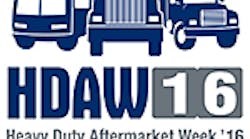Independent service providers and fleets get access to repair information under recent agreement signed with truck and engine makers
MARC Karon, president of Total Truck Parts, believes the commercial vehicle industry is under attack.
He believes that truck owners, fleet managers, independent repair shops that services commercial vehicles, and parts retailers are all being negatively affected by an inability to obtain all the repair codes and reprogram on-board computers on vehicles over 14,000 lbs GVW—meaning that these vehicles must be repaired by vehicle dealers in many cases.
Caron is one of the directors for the Commercial Vehicle Solutions Network (CVSN), which has been successful in getting legislation passed in Massachusetts. For the first time ever, Heavy Duty Right to Repair legislation, which granted the right to repair and access to information to entities other than OE dealers, was passed and signed into law in November 2013.
CVSN proposed additional legislation in seven other states but before laws could be passed, the OE vehicle manufacturers, through the Engine Manufacturers Association (EMA), requested that all parties attempt to reach a negotiated agreement.
In September, an agreement was announced in a Memorandum of Understanding (HD MOU) between the Commercial Right to Repair Coalition and the EMA, in which OEMs of heavy-duty vehicles would provide service information to independent service providers by way of their OEM technical websites.
To assist in managing the understanding, search, and feedback related to this cooperative effort between HD OEMs and independent HD service specialists, the National Automotive Service Task Force (NASTF) was asked to expand its scope with the addition of heavy duty to its similar service already being provided to the light vehicle industry.
Karon said one of the reasons behind the partnership is that managing the repair information in question and getting it in the hands of independent shops “is easier said than done. The OEs have direct relationships with dealers, but do not have agreements with diverse and disparate independents, so we took to NASTF to help implement what OEs said they would provide by signing the MOU.”
OEs will supply the same information and same limitations that they give to their dealers to the independent service shops if they buy licenses to do that.
Those include:
• Location of critical sensors on the vehicle.
• Wiring diagrams.
• Ability to reflash on-board computers.
• As-built VIN to OE part number information. “If it’s a sensor on the vehicle that is bad, it will tell you what the part number is on the sensor,” Caron said. “It’s not yet something where the parts department can then have the VIN code part number information. That we haven’t been able to accomplish yet.”
• Any specialized tools.
• Licensing at fair and reasonable prices. “That’s a general term, but it really has significance. It was in the federal law on pollution, so it does have defining principles, so they can’t just charge us whatever they want.”
• NASTF will field initial complaints claiming lack of information (Service Information Request). “This will be a process. There are going to be times where software doesn’t work right and you need help with it. NASTF will provide that. If it’s something you need to do and it’s not in software, NASTF will contact the OE. They have contacts for every single OE, and they will find out what we need to do to get that fixed, hopefully in a day or so.”
• Unresolved disputes through NASTF will then go to the DRP for final resolution. “For instance, if there is a particular type of reflashing we can’t do, we have a process built into it that allows us to meet with OEs and basically get compliance.
• OEs will not provide any training. “That was adamant from the very beginning so CVSN is working on providing industry training. Hopefully by the end of the first quarter, and certainly by the second quarter, CVSN will be announcing training opportunities on its website where you can have technicians trained from the beginning level all the way to the top level to do everything from preliminary stuff all the way to reflashing and high-tech engine stuff. It will be set up in a module sequence, so you just buy what you need. So you might want to take one tech in your shop and make him a super tech and maybe other guys at a lower level. We’re trying to keep the price of this less than $3000 a tech. We think it’s a very good deal. I just had an email from a fleet that wants to participate on that.”
The following EMA members have released software: Cummins, Caterpillar, Fiat/Chrysler, Ford Truck, GM Truck, Hino, Volvo/Mack, and UD Trucks.
Daimler, Freightliner, Western Star, Detroit Diesel, Navistar, PACCAR, Peterbilt, and Kenworth have said they will participate, but have not yet released software.
Among suppliers, Allison, Bendix, and Eaton have released software, and Meritor-Wabco has agreed to.
Initially, NASTF will concentrate on updating its popular OEM service website index, www.nastf.org/OEMtechsites, with the addition of technical website URLs for all heavy-duty vehicle and major component OEMs. NASTF will begin accepting questions from independent HD technicians on the NASTF SIR feedback feature, www.nastf.org/FileSIR.
As HD OEMs and independent HD service techs gain experience in their new level of shared service information, NASTF will attempt to add helpful features to www.nastf.org to assist HD techs in finding the OEM resource they need, and to assist HD OEMs in successful delivery to those techs of what they have made available. ♦










